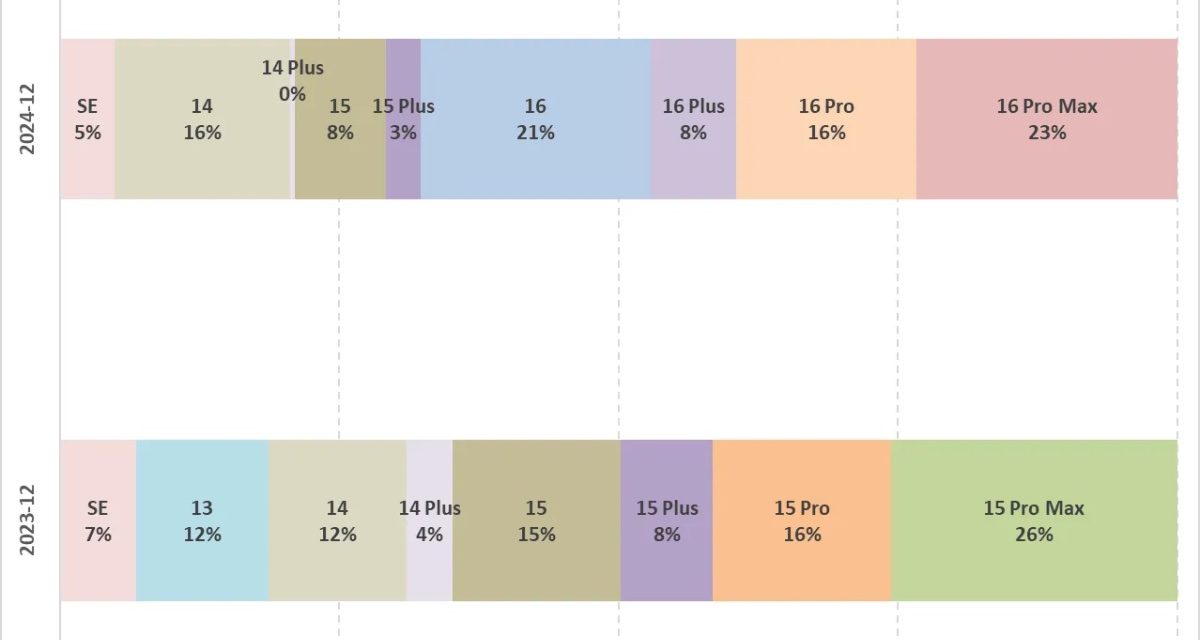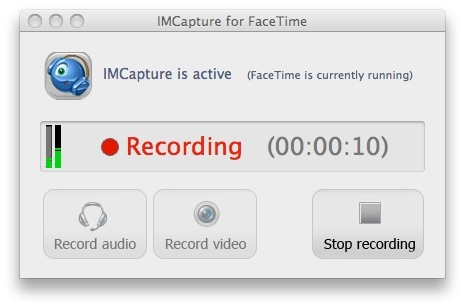Based on the December 2024 quarter, combined, the new iPhone 16 models are roughly as popular as new models launched in previous years, according to the Consumer Intelligence Research Group.
Yet, there is movement in the mix of models that is cause for caution or even pessimism about the sales performance of this generation of iPhones, notes CIRP in a new study. Apple introduced its new iPhone 16 models in early September for sales starting September 20, 2024. They include the base iPhone 16 and larger iPhone 16 Plus, and premium iPhone 16 Pro and its larger partner, iPhone 16 Pro Max. Sales this quarter includes the new models, and the legacy iPhone 15 and 15 Plus, iPhone 14, and iPhone SE.
In the December 2024 quarter, the new iPhone 16 models combined for a 68% share of total US iPhone sales, slightly ahead of the 65% share for the then-new iPhone 15 models in December 2023. Combined share for the two iPhone Pro models was down, however.
The high-end iPhone 16 Pro Max model was the best seller, accounting for 23% of sales. That is a smaller share compared to last year’s 15 Pro Max, which had 26% of sales in the December 2023 quarter. iPhone 16 Pro accounted for 16% of sales this quarter, the same performance as the 15 Pro in the year-ago quarter. This year’s combined 39% leads the iPhone lineup but is the lowest level for both Pro phones in the December quarter in the past five years.
The base iPhone 16 was the second most popular model at 21% of sales. That is a significant increase from the 15% of sales for iPhone 15 in the December 2023 quarter, and a return to the level of previous base iPhones.
From the CIRP report: We also saw the oldest models do better in the December 2024 quarter compared to the prior year. In particular, the two-year old iPhone 14 had 16% of sales in the quarter. By comparison, the two-year old model in the December 2023 quarter, iPhone 13, had only 12% of sales.
What we don’t know is what is driving this apparent thrift. Are the leading-edge iPhone buyers waiting for anticipated significant changes in the iPhone 17 line-up? Is the installed base of Pro and Pro Max iPhones performing so well that they don’t need replacing? Is inflationary pressure on other purchases encouraging iPhone buyers to save $100 or $200, selecting phones that still more than meet their needs? We’ll need a couple more quarters to learn more.
Article provided with permission from AppleWorld.Today



